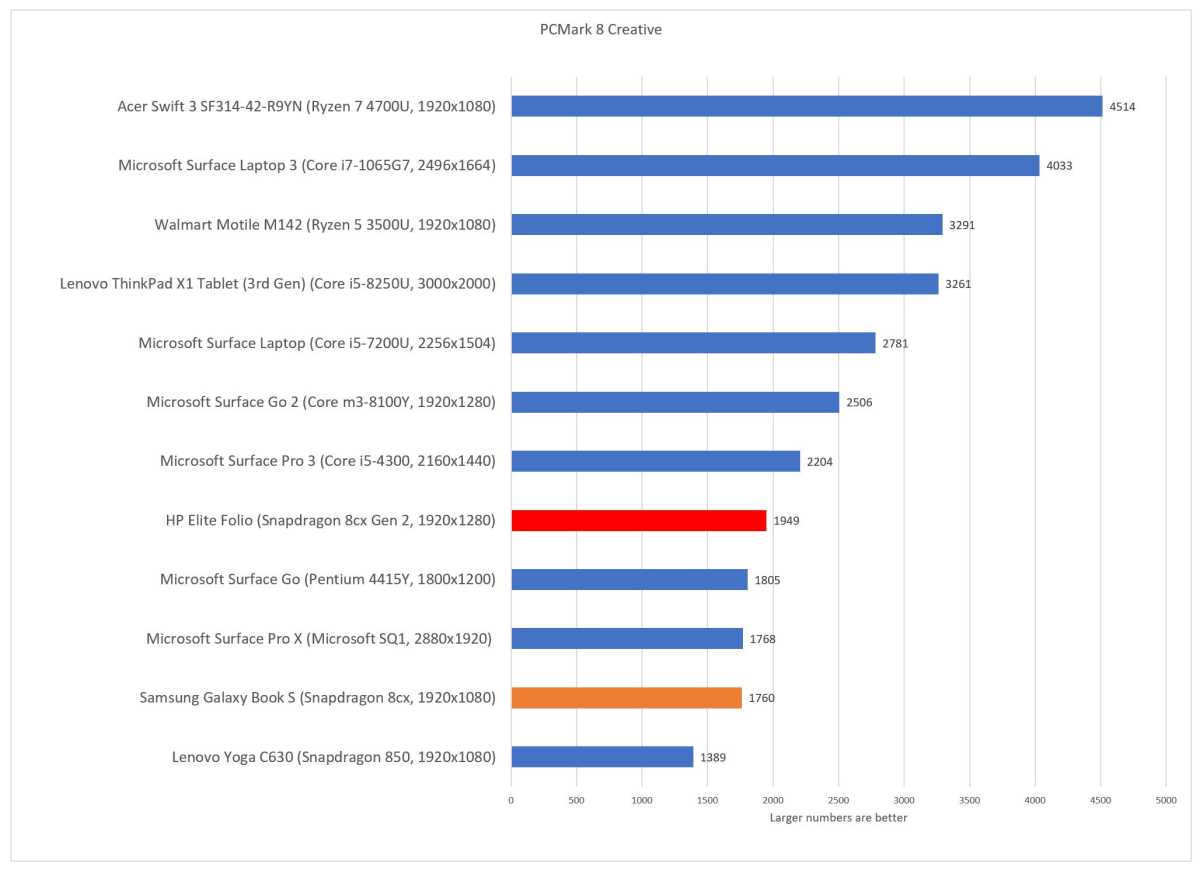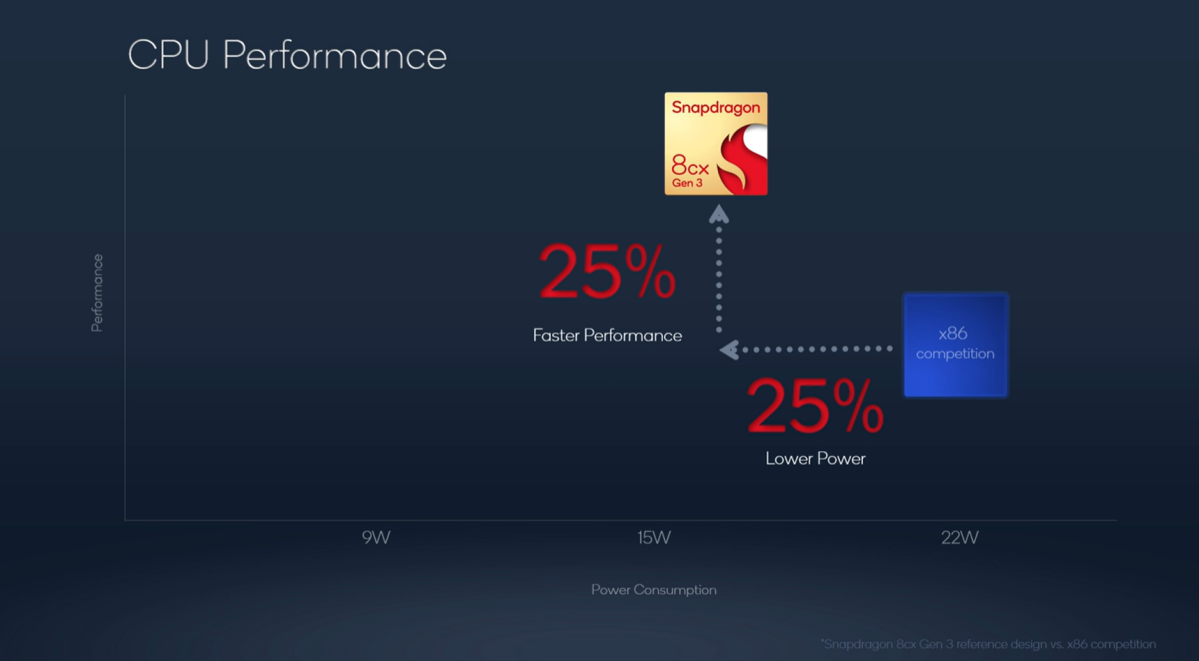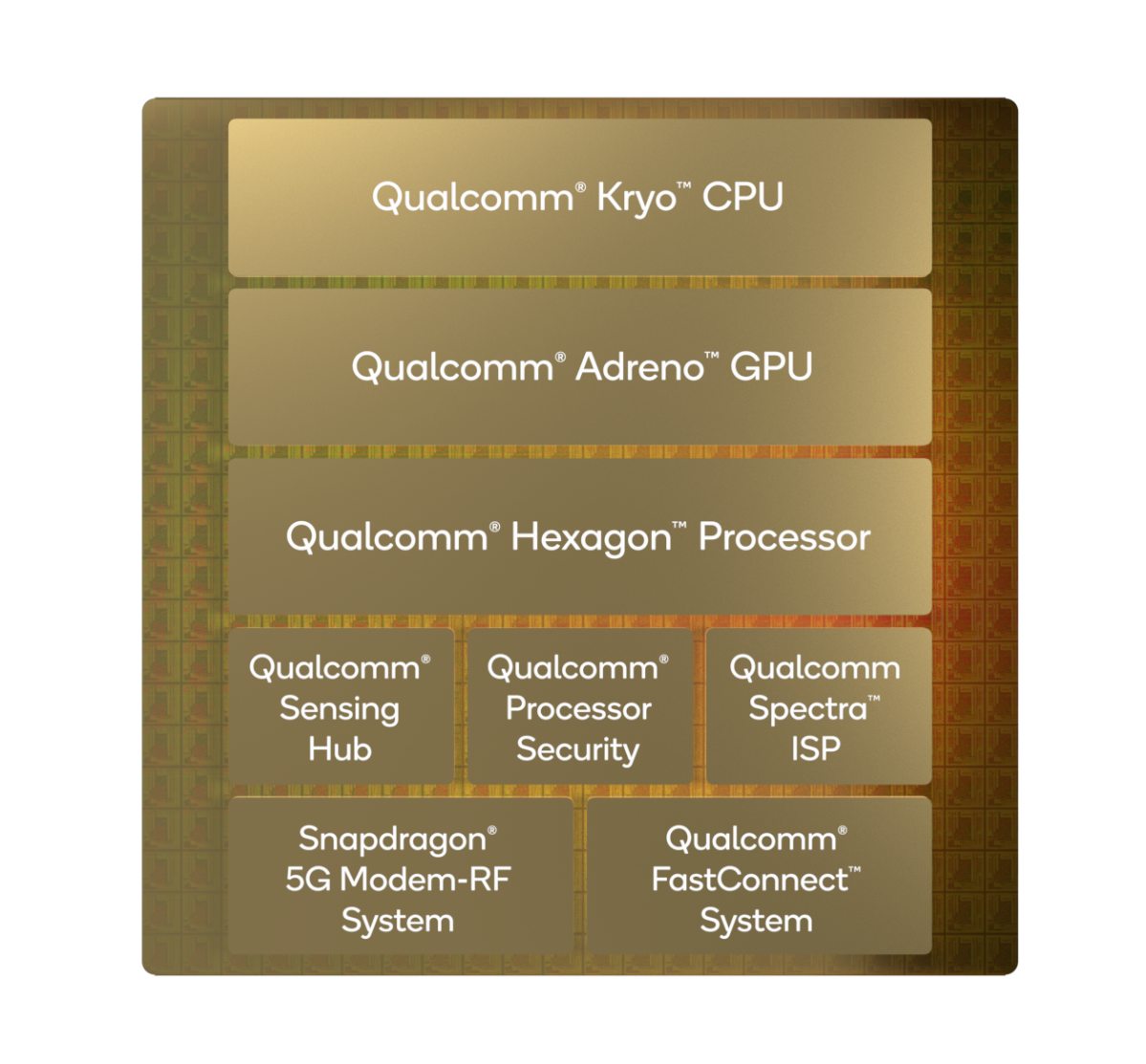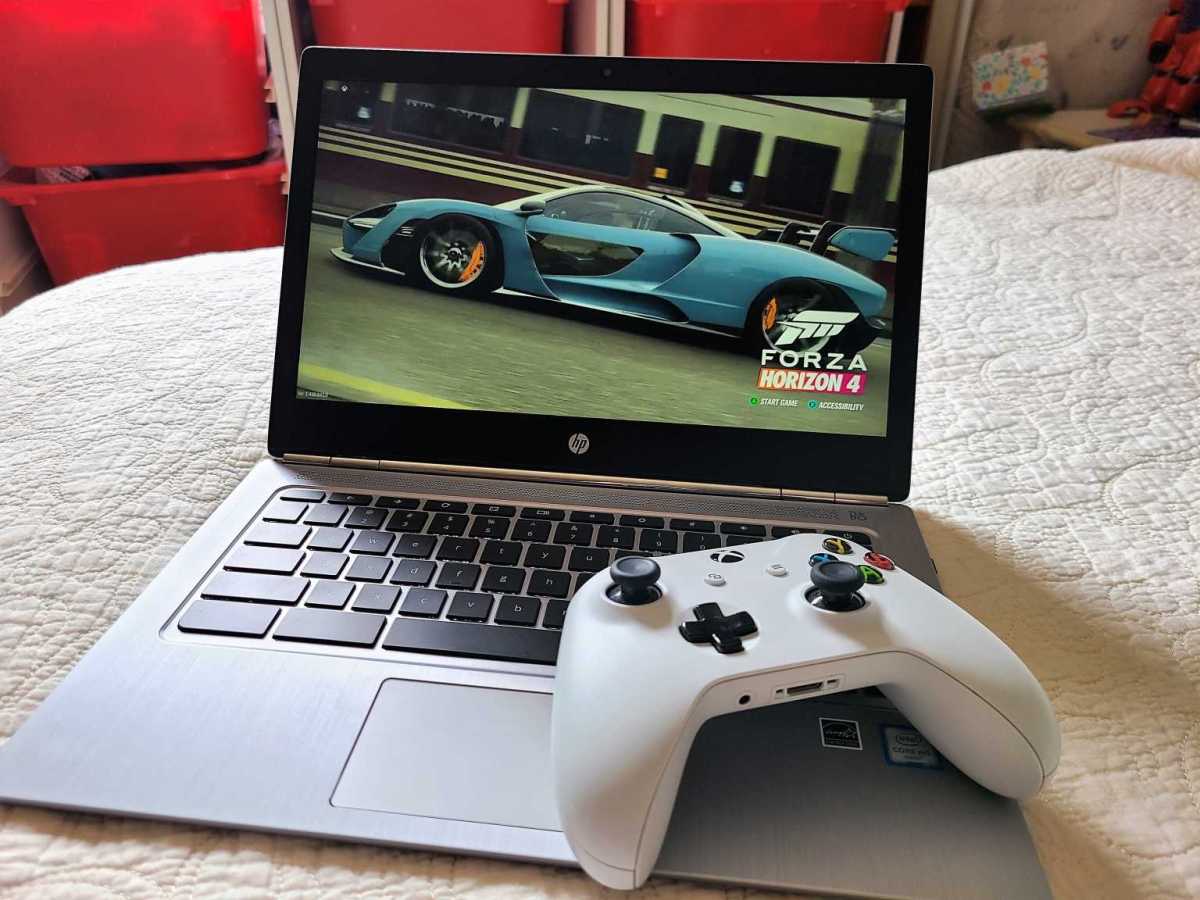On Wednesday, Qualcomm launched the Snapdragon 8cx Gen 3 processor platform for PCs at its Snapdragon Tech Summit, claiming that the chip will offer up to 85 percent more performance than the prior generation.
That’s good, given that the pandemic severely undercut the value proposition of Snapdragon-powered PCs—long battery life and always-on mobile connectivity—as office work life moved to the home office desk and couch. Qualcomm’s Snapdragon 8cx Gen 2 arrived this past spring at about the performance of the original Microsoft Surface Laptop, though with substantially higher graphics chops.
Qualcomm’s aggressive performance predictions about the Snapdragon 8cx Gen 3 are based on its new process shrink—from 7nm in the Gen 2 to a new, aggressive 5nm node in Gen 3. In all, Qualcomm believes that the chip will offer 85 percent more CPU performance than the prior generation, and 60 percent additional GPU performance. “We focused on really driving these features and capabilities in the mainstream PC segment,” said Miguel Nunes, vice president of product management for Qualcomm, in a briefing with reporters.

Mark Hachman / IDG
Qualcomm also announced the Snapdragon 7c+ Gen 3 compute platform for entry-tier PCs and Chromebooks. It’s built on a 6nm process, with up to 60 percent faster CPU performance and up to 70 percent GPU performance uplift. Like the Snapdragon 8cx Gen 3, the 7c+ will be 5G enabled.

Qualcomm
Qualcomm isn’t disclosing the clock speed of the Snapdragon 8cx Gen 3, nor is it disclosing the names of its integrated Kryo CPU, Adreno GPU, or Hexagon DSP—blame the new naming scheme adopted by its mobile Snapdragon 8 processors. We do know the chip will support LPDDR4X-4266 memory, NVMe SSDs, a pair of 4K external displays via DisplayPort, and 4K HDR@120fps video playback in hardware. Games can run at up to 1080p at 120Hz, Qualcomm says.
Qualcomm also added an additional performance estimate of the new chip during its presentation at the Snapdragon Tech Summit.

Qualcomm
According to Qualcomm’s Nunes, the Snapdragon 8cx Gen 3 doesn’t include any “efficiency” cores, just “performance” and “prime” cores. (During his presentation, Nunes then said that the Snapdragon 8cx offers both prime and efficiency cores.) Process shrinks offer an opportunity to save power, increase performance, or a combo of both; with the Snapdragon 8cx Gen 3, Qualcomm made the decision to dial up performance as high as it could.

Qualcomm
Qualcomm’s processors run on the Arm instruction set, a platform that has struggled for years to keep up with the traditional x86 instruction set used by PC processors like AMD’s Ryzen and Intel’s Core chips. Last year Microsoft added support for 64-bit instructions to be added via emulation, hypothetically allowing most, if not all, of the PC’s traditional apps to run on top of Arm. That compatibility has been baked right into Windows 11, hopefully removing the compatibility issue from a consumer’s buying decision.
Cameras, connectivity shine
Now, Qualcomm has to sell PC makers on its traditional strengths. In the smartphone market, the company’s new Snapdragon 8 Gen 1 mobile processors can leverage the Hexagon DSP to apply AI processing to photos and video, creating artificial bokeh and other effects. The Snapdragon 8cx Gen 3 improves AI performance threefold, to 29 trillion operations per second (TOPS). (The 7c+ will offer 6.5 TOPS.) You can probably expect to see the Snapdragon applying its AI capability to videoconferencing, with improved face detection, video backgrounds, sharper images, and so on.
Granted, some of Qualcomm’s mobile strengths may seem a little overpowered for the PC space. For example, the integrated Spectra ISP supports up to three cameras, with 24Mpixels of resolution and 4K HDR. Convincing a PC maker to include a 1080p (versus a 720p) webcam will likely be Qualcomm’s first challenge. It will be Qualcomm’s post-processing skills (autofocus, automatic white balance, and auto exposure—all features of the Snapdragon 8cx Gen 3) where Qualcomm may have the most success. Still, Nunes postulated a world where front- and rear-facing cameras could be used to create a hybrid environment. The Snapdragon 8cx Gen 3 also leverages Qualcomm’s AI-driven audio noise suppression, battle-tested in the noisy world of smartphone calls.
“You’ll see better cameras show up,” Nunes promised. Qualcomm is working with the supply chain to get better camera modules and pre-tune them for laptop makers, he said.
It’s not clear whether the always-on cameras that Qualcomm talked about with its smartphone processors will make their way to the laptop market. If they do, Nunes implied that it would be less about laptops “seeing” users, than it would be for presence detection.
Nunes also highlighted Qualcomm’s strengths in modems; PC makers will have three to choose from, ranging from the Snapdragon X65 5G modem (with 10Gbps downloads) to the Snapdragon X62 and X55 5G modems. The 8cx Gen 3 will also include the FastConnect 6900, with support for Wi-Fi 6e and its additional 6GHz channel for high-speed wireless communication.
Nunes made the point that high-speed connectivity will help offset any lack of native performance, too: cloud gaming services like Microsoft’s Xbox Cloud Gaming (XCloud) depend on high-speed, low-latency connectivity to render games on a remote service.

Mark Hachman / IDG
Finally, the Snapdragon 8cx Gen 3 supports Microsoft’s secured-core PC initiative, including support from Microsoft’s Pluton architecture, satisfying the Windows 11 TPM requirement. Features like runtime memory encryption, secured cameras, and even GPS-powered trusted locations may help Qualcomm win business or government PCs. “We don’t believe security should be optional,” Nunes said, an oblique criticism of the vPro architecture Intel provides as part of its business (but not consumer) platforms.
You’ll have to wait a bit for PCs based on the Snapdragon 8cx Gen 3 and 7c+ to debut, however, as Qualcomm says they’ll launch in the first half of 2022. Nunes said Qualcomm sees the current rollouts as an opportunity for Qualcomm to start building out its infrastructure for various pricing tiers, top to bottom.
Later, Qualcomm will begin to integrate the Nuvia technology that the company bought in January. That will roll out in 2023. According to Nunes, Qualcomm does own a basic architectural license, which means that the company believes it can keep up with Apple’s M1.
“We can do everything that they can do,” Nunes said.
This story was updated at 5:46 PM with additional details.


